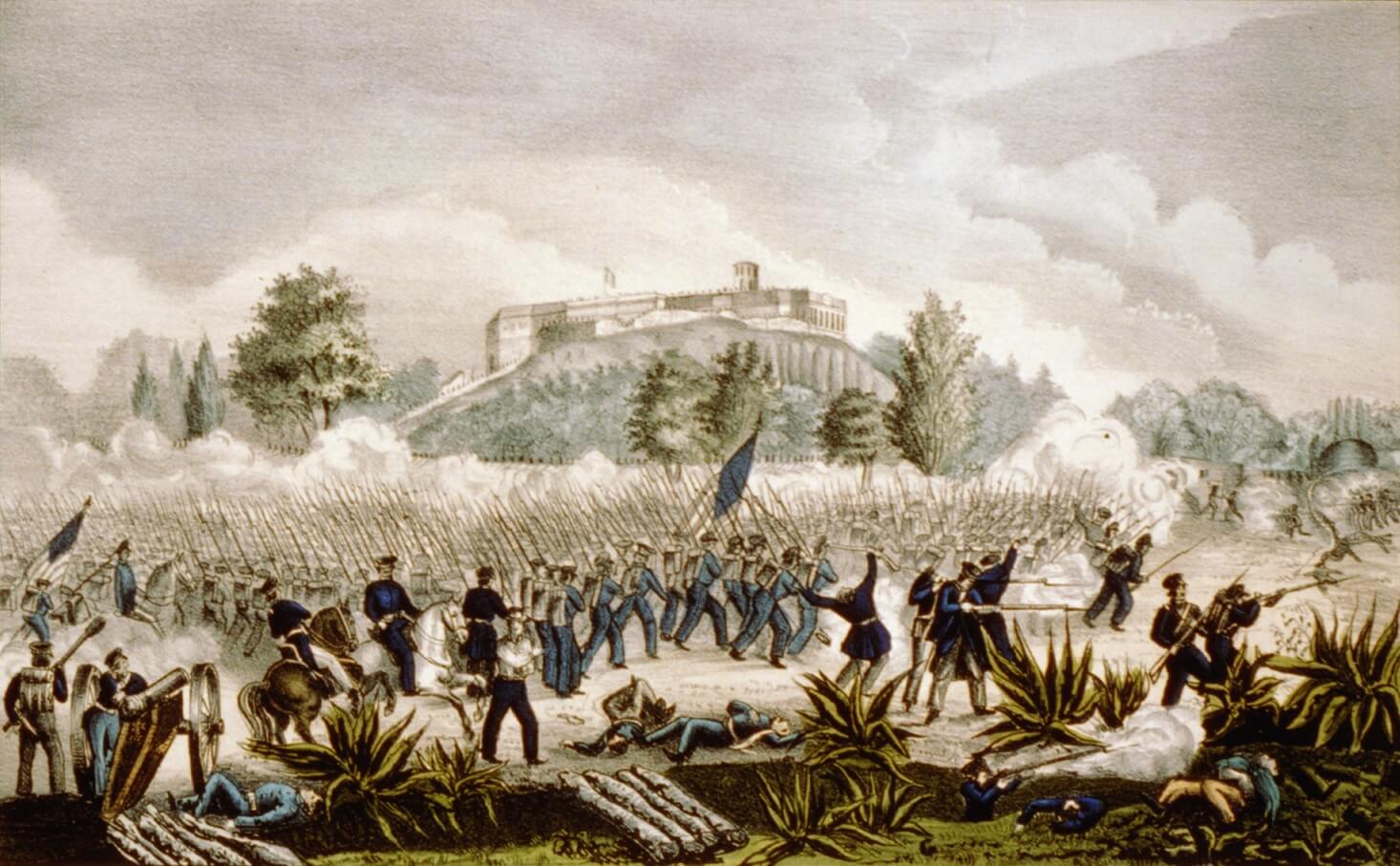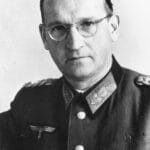The Pivotal Battle for Mexico City
The Battle of Chapultepec, fought on September 12-13, 1847, stands as a pivotal moment in the Mexican-American War. This clash, high atop a hill overlooking Mexico City, determined the war’s outcome, giving the United States control of the Mexican capital and dramatically redrawing the map of North America.
From Texas Annexation to Chapultepec Hill: The Path to War
The Mexican-American War stemmed from escalating tensions between the United States and Mexico, largely fueled by the U.S. annexation of Texas. This disagreement over land ultimately led U.S. General Winfield Scott to launch a campaign targeting Mexico City. This campaign brought him to Chapultepec Hill, a strategic location housing the Mexican Military Academy—a symbol of Mexican national strength. Capturing Chapultepec wasn’t simply about seizing a hill; it was a symbolic victory, striking at the heart of Mexican military might.
Scaling the Heights: The Assault on Chapultepec Castle
On September 12th, American forces initiated a two-pronged assault on Chapultepec Castle. The fighting was intense. Six young cadets, known as the “Niños Héroes” (the Boy Heroes), chose to fight to the death rather than surrender. Their bravery, though some details are debated by historians, became a symbol of Mexican courage and patriotism.
Despite the cadets’ and other Mexican soldiers’ valiant defense, the better-equipped American troops breached the castle walls, forcing the Mexican army to retreat. This allowed the Americans to occupy Mexico City, a decisive blow in the war.
A Continent Reshaped: The Treaty of Guadalupe Hidalgo and its Legacy
The Battle of Chapultepec effectively ended the Mexican-American War, leading to the Treaty of Guadalupe Hidalgo in 1848. This treaty dramatically reshaped North America. Mexico ceded vast territories to the U.S., including present-day California, Nevada, Utah, most of Arizona and New Mexico, and parts of Colorado, Wyoming, Kansas, and Oklahoma.
The war, and Chapultepec in particular, cast a long shadow over U.S.-Mexico relations. Historians continue to study its long-term impact on westward expansion and the development of the American Southwest, and current research suggests its effects continue to resonate today. In Mexico, the Niños Héroes remain potent national symbols of resilience against adversity. The battle serves as a complex reminder of territorial ambition, military strategy, courage, and the human cost of war.
Why Was the Battle of Chapultepec Important?
The Battle of Chapultepec wasn’t merely a battle; it was a turning point in the Mexican-American War. Its significance lies in its strategic importance, the bravery of its young defenders, and its lasting impact on U.S.-Mexico relations.
Strategic Importance: The Key to Mexico City
Chapultepec Castle was the key to controlling Mexico City, the Mexican capital in 1847. Its elevated position provided a crucial defensive advantage. Capturing Chapultepec was essential to winning the war, making the battle strategically critical. Some historians suggest the entire war’s outcome hinged on this single engagement.
The Niños Héroes: A Symbol of Courage
The cadets’ defense of Chapultepec Castle exemplifies courage. These young students at the Mexican Military Academy fought against a larger, better-equipped force, becoming known as the “Niños Héroes.” While some details of their final stand are debated, their bravery is undeniable and remains a powerful symbol of Mexican national identity.
The Treaty of Guadalupe Hidalgo: Reshaping North America
The Battle of Chapultepec led to the Treaty of Guadalupe Hidalgo, which forced Mexico to cede large territories that now comprise major parts of the southwestern United States. This loss profoundly impacted Mexico and reshaped the North American map. Research continues to explore the treaty’s long-term consequences, including its impact on the people living in the ceded lands.
A Lasting Legacy
The Battle of Chapultepec remains a complex story of strategy, courage, and loss, raising questions about the human cost of war and territorial disputes. It underscores the importance of understanding history’s complexities and its ongoing evolution.
| Feature of the Battle | Significance |
|---|---|
| Strategic Location | Key to controlling Mexico City and winning the war |
| Heroic Defense by Cadets | Symbol of Mexican resistance and national pride |
| Treaty of Guadalupe Hidalgo | Reshaped the map of North America |
While much is known, some details remain debated among historians, encouraging further exploration and reminding us that history is an ongoing conversation. The battle’s consequences likely still shape North America’s political and social landscape.
How Many Marines Died at the Battle of Chapultepec?
The Battle of Chapultepec on September 13, 1847, was a brutal clash that significantly shaped the Mexican-American War’s outcome. While exact figures are difficult to determine due to limited record-keeping at the time, historical accounts suggest approximately 30 Marines perished in the assault, representing a devastating loss, likely around 90% of the Marine officers and non-commissioned officers present.
The Assault on Chapultepec Castle
American forces, larger and better equipped than their Mexican counterparts, were commanded by General Winfield Scott. They faced General Antonio López de Santa Anna’s Mexican army, determined to defend their capital. American artillery bombarded Chapultepec Castle before the ground assault. The Marines faced a daunting uphill battle, storming the castle under intense fire, scaling its walls with ladders and sheer determination.
The Cost of Victory
The American victory at Chapultepec came at a high price. It opened the way for the capture of Mexico City two days later, effectively ending the war. While remembered for the heroism of both sides, including the Niños Héroes, the devastating Marine losses deserve recognition. Their sacrifice, difficult to quantify with absolute certainty, was instrumental in the American victory and the reshaping of North America.
Ongoing research may reveal more about the casualties. While 30 Marine deaths is the generally accepted figure, it remains an estimate. The true number might vary. The Battle of Chapultepec underscores the tragic human cost of war, and while statistics help understand the scale of conflict, they can never fully capture the individual stories of courage, loss, and sacrifice.
Did the Americans Win the Battle of Chapultepec?
The Battle of Chapultepec was a pivotal moment in the Mexican-American War. The Americans, under General Winfield Scott, aimed to capture Mexico City, and Chapultepec Castle was key. The brutal two-day battle (September 12-13, 1847) involved determined Mexican defenders, including the “Los Niños Héroes.”
While the Americans captured the castle and Mexico City, “winning” is complex. Militarily, the U.S. achieved its objective. The castle’s capture led to the occupation of Mexico City, effectively ending the war. The subsequent Treaty of Guadalupe Hidalgo resulted in Mexico ceding significant territory to the United States.
However, victory came at a cost. Heavy casualties on both sides, particularly among the young cadets, remain a sensitive point. The treaty, while ending the war, left a legacy of resentment. Some argue the victory’s cost and lasting negative consequences complicate labeling it a clear “win.”
| Outcome | Perspective |
|---|---|
| Captured Chapultepec Castle | American Victory |
| Occupied Mexico City | American Victory |
| Gained significant territory from Mexico | American Victory |
| Heavy casualties on both sides | Loss for both |
| Lasting resentment and complex relations | Complicates the idea of “winning” |
Did the Americans win? Militarily, yes. But the full story is more nuanced. The battle and the war had profound, lasting impacts, raising complex questions about the true meaning of victory. Ongoing research explores the ramifications of this critical moment in history, suggesting our understanding may continue to evolve.
Are you fascinated by military history? Learn more about Audie Murphy, the most decorated American soldier of World War II. Interested in legal history related to searches? Explore the landmark case of Chimel v. California.
- Unlock what part of speech is is: Master English Grammar Now - April 2, 2025
- Unlock the best US history books: A curated list for insightful reading - April 2, 2025
- First Lady Book: A History of Power and Influence - April 2, 2025
















